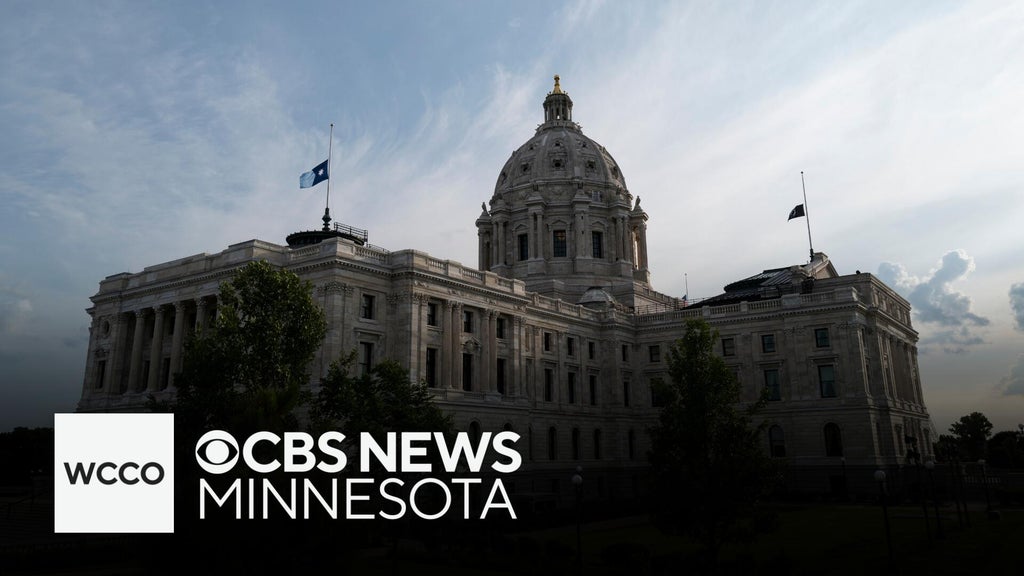President Donald Trump’s sweeping legislative initiative, often dubbed the “big, beautiful bill,” is poised to send ripples of financial uncertainty across the nation, with Minnesota bracing for a particularly significant impact. As the federal spending bill reportedly nears final approval, possibly as early as Monday night, fiscal analysts are sounding the alarm over a projected $1.5 billion deficit it could carve into the Minnesota state budget, a figure that underscores the profound interconnectedness of federal policy and state-level financial stability. This potential shortfall is not merely an abstract number but represents a tangible threat to the state’s capacity to uphold its financial commitments and provide crucial services to its citizens.
The impending budget gap raises immediate and serious concerns regarding Minnesota’s ability to fund essential public services that residents rely on daily. From educational programs and healthcare provisions to public safety initiatives and social welfare networks, vital sectors could face unprecedented pressure. A deficit of this magnitude could necessitate difficult conversations and potential reallocations of funds, forcing state lawmakers to prioritize certain areas over others and possibly curtailing the scope or availability of existing programs, impacting countless Minnesotans directly.
Beyond immediate services, the “big, beautiful bill’s” impact could extend to Minnesota’s long-term infrastructure projects and overall economic health. Major transportation improvements, public works, and economic development initiatives often rely on a delicate balance of state and federal funding. A sudden and substantial reduction in available state funds could delay or even halt critical projects designed to enhance the state’s competitiveness and quality of life, potentially leading to job losses and a slowdown in regional economic growth. The state’s bonding capacity and credit rating could also come under scrutiny, adding another layer of complexity to its financial management.
The projected $1.5 billion hole would compel Minnesota’s state government to navigate an exceptionally challenging fiscal landscape. Lawmakers would likely be faced with an array of unpalatable options, including significant spending cuts across various departments, a comprehensive re-evaluation of the efficacy and necessity of current state programs, or the exploration of alternative revenue streams through increased taxation or new fees. Each of these avenues presents its own set of political and economic challenges, promising intense debate within the Minnesota legislature and potentially shifting the state’s fiscal philosophy for years to come.
This evolving situation vividly illustrates the intricate and often delicate relationship between federal fiscal policy and its direct, considerable impacts on individual state economies. While federal spending bills are crafted with national objectives in mind, their provisions can translate into profound budgetary shifts at the state level, demanding adaptability and strategic foresight from local policymakers. The current scenario involving the Donald Trump administration’s legislative push highlights how decisions made in Washington D.C. can reshape the financial realities and priorities of states like Minnesota, prompting a re-examination of fiscal federalism.
Consequently, this significant legislative development is being closely monitored by a wide spectrum of stakeholders within Minnesota and beyond. Residents are keen to understand how their daily lives and public services might be affected, while policymakers are grappling with the complex calculations and strategic choices required to mitigate the projected deficit. Economists, meanwhile, are analyzing the broader implications for the state’s economic outlook, pondering how this federal spending bill could reshape Minnesota’s financial trajectory for the foreseeable future and ignite considerable debate on the balance of federal and state financial responsibilities in US Politics.
The potential budget shortfall thus represents a critical juncture for Minnesota, demanding a collaborative and decisive response from its leadership. As the “Spending Bill” progresses through Congress, the focus will undoubtedly shift to how the state plans to absorb such a substantial fiscal blow and what measures will be implemented to ensure the continued delivery of essential services without unduly burdening its citizens. The unfolding drama in US Politics serves as a potent reminder of the constant interplay between national policy and local impact, with Minnesota positioned at the heart of this compelling fiscal challenge.
Discover more from The Time News
Subscribe to get the latest posts sent to your email.






